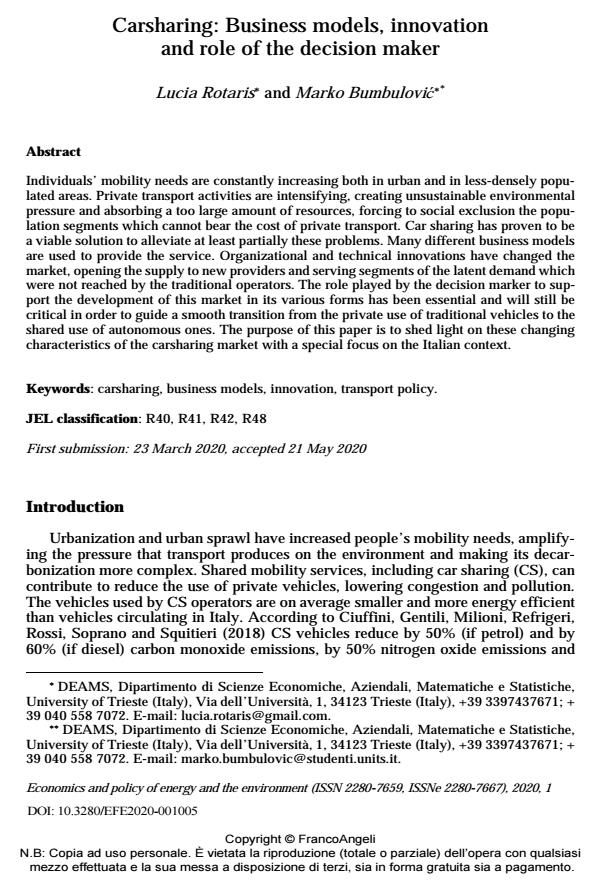Carsharing: Business models, and role of the decision maker
Titolo Rivista ECONOMICS AND POLICY OF ENERGY AND THE ENVIRONMENT
Autori/Curatori Lucia Rotaris, Marko Bumbulovic
Anno di pubblicazione 2020 Fascicolo 2020/1
Lingua Inglese Numero pagine 32 P. 63-94 Dimensione file 272 KB
DOI 10.3280/EFE2020-001005
Il DOI è il codice a barre della proprietà intellettuale: per saperne di più
clicca qui
Qui sotto puoi vedere in anteprima la prima pagina di questo articolo.
Se questo articolo ti interessa, lo puoi acquistare (e scaricare in formato pdf) seguendo le facili indicazioni per acquistare il download credit. Acquista Download Credits per scaricare questo Articolo in formato PDF

FrancoAngeli è membro della Publishers International Linking Association, Inc (PILA)associazione indipendente e non profit per facilitare (attraverso i servizi tecnologici implementati da CrossRef.org) l’accesso degli studiosi ai contenuti digitali nelle pubblicazioni professionali e scientifiche
Individuals’ mobility needs are constantly increasing both in urban and in less-densely popu-lated areas. Private transport activities are intensifying, creating unsustainable environmental pressure and absorbing a too large amount of resources, forcing to social exclusion the popu-lation segments which cannot bear the cost of private transport. Car sharing has proven to be a viable solution to alleviate at least partially these problems. Many different business models are used to provide the service. Organizational and technical innovations have changed the market, opening the supply to new providers and serving segments of the latent demand which were not reached by the traditional operators. The role played by the decision marker to sup-port the development of this market in its various forms has been essential and will still be crit-ical in order to guide a smooth transition from the private use of traditional vehicles to the shared use of autonomous ones. The purpose of this paper is to shed light on these changing characteristics of the carsharing market with a special focus on the Italian context.
Parole chiave:Carsharing, business models, innovation, transport policy.
Jel codes: R40, R41, R42, R48
Lucia Rotaris, Marko Bumbulovic, Carsharing: Business models, and role of the decision maker in "ECONOMICS AND POLICY OF ENERGY AND THE ENVIRONMENT" 1/2020, pp 63-94, DOI: 10.3280/EFE2020-001005